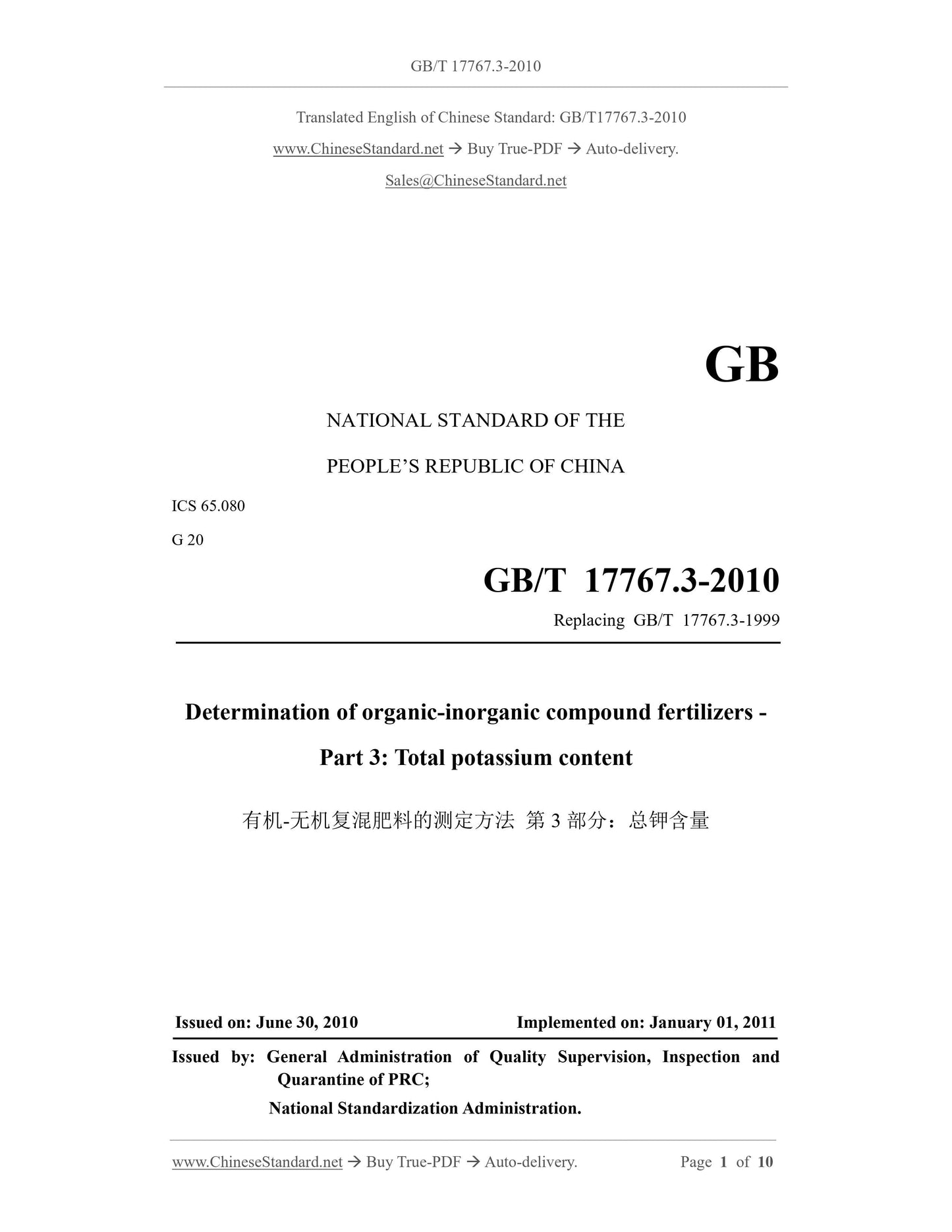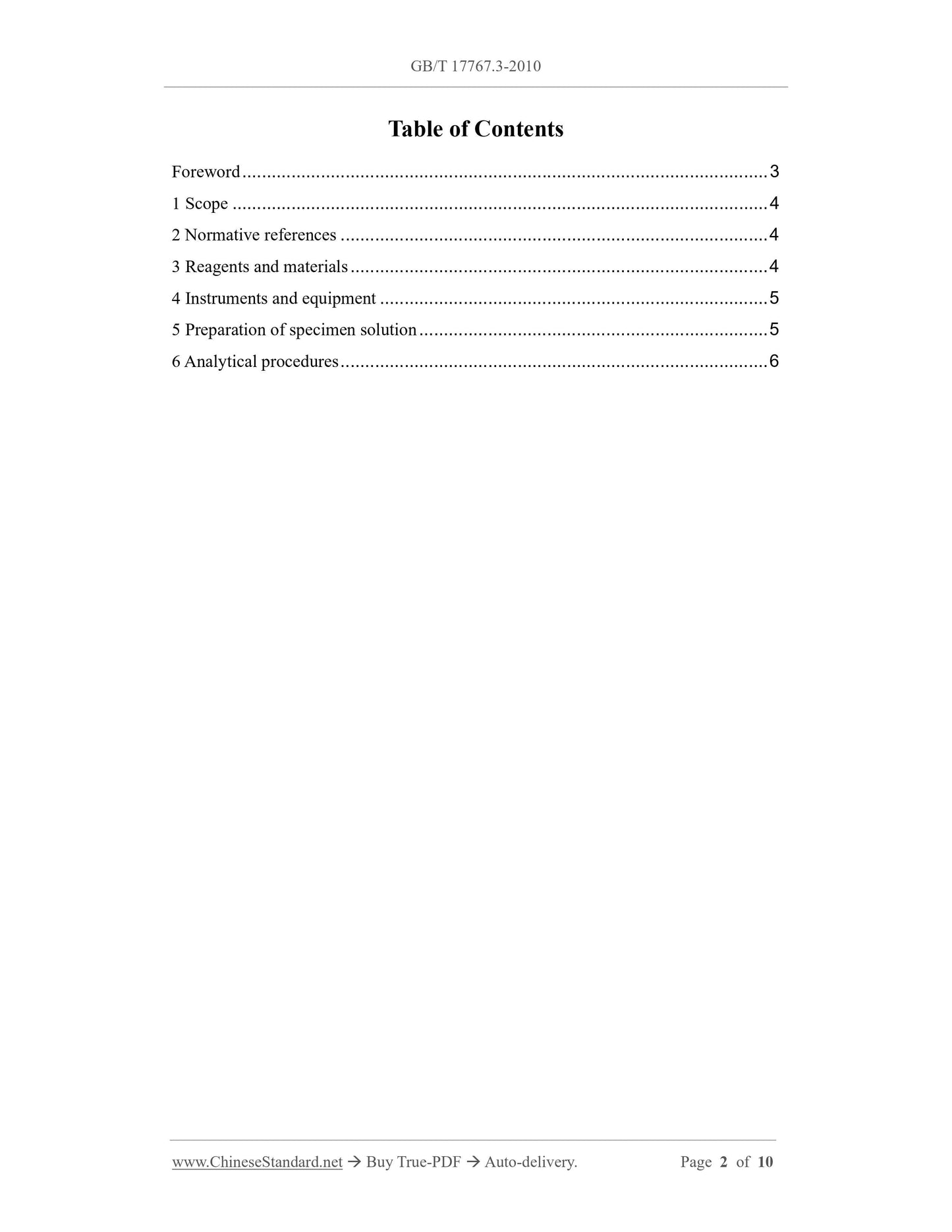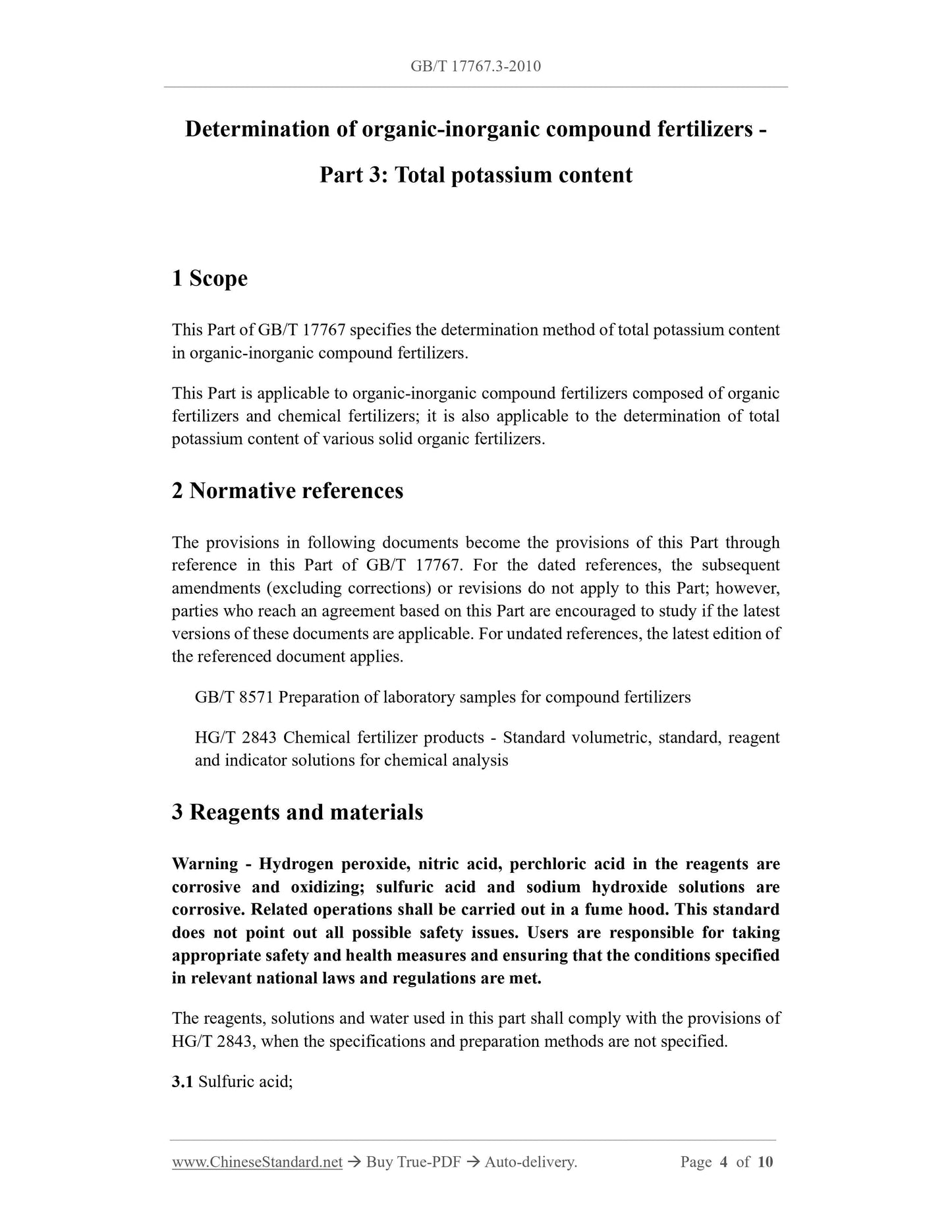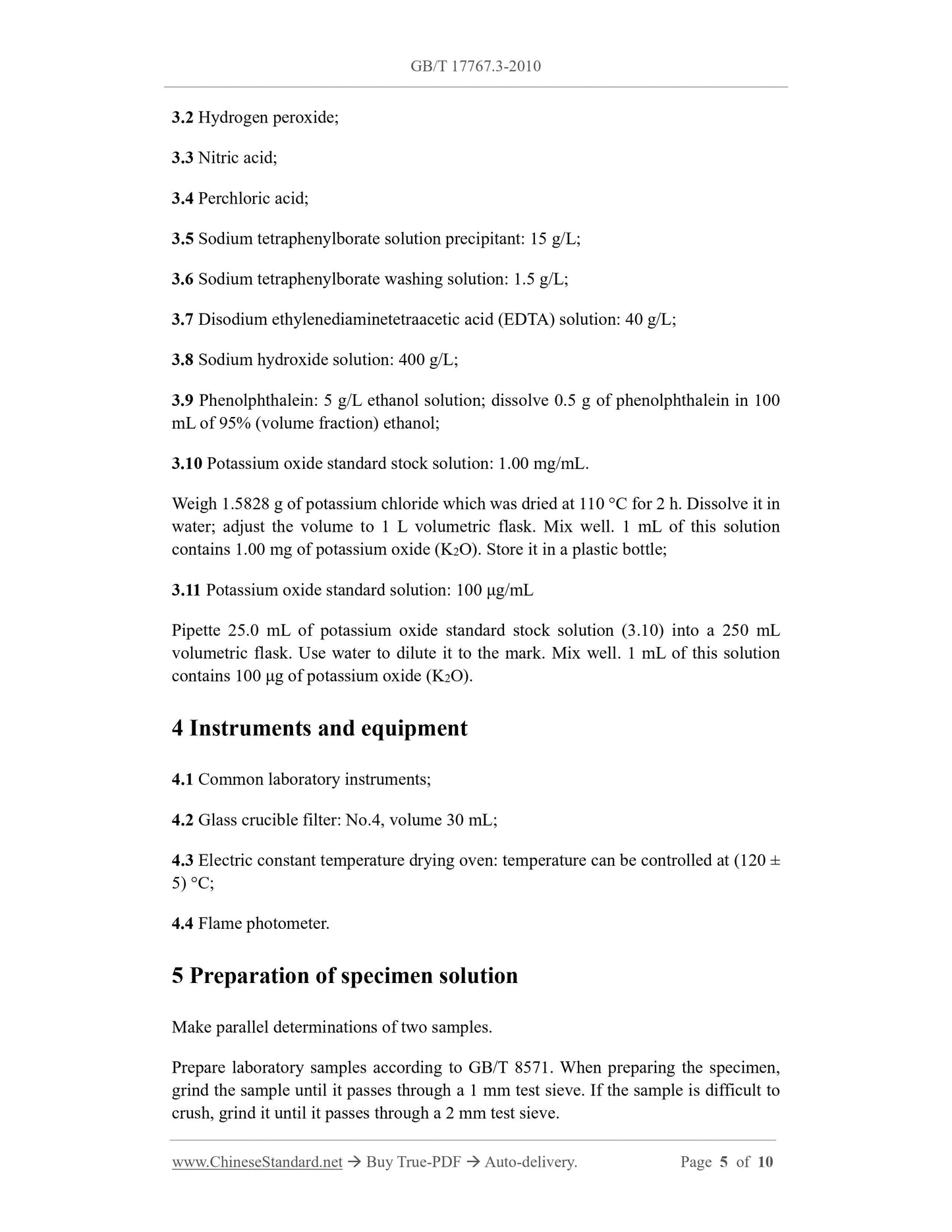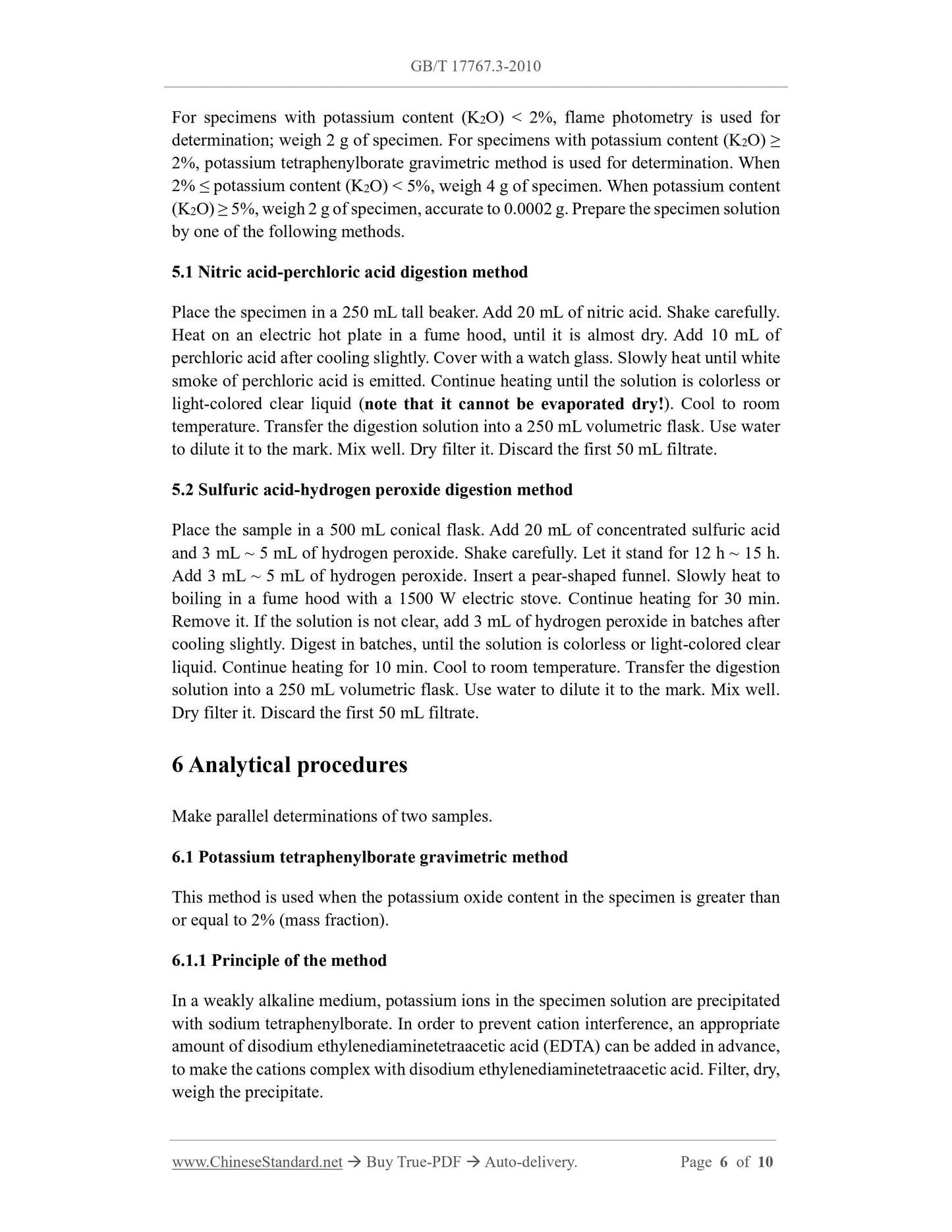1
/
of
5
www.ChineseStandard.us -- Field Test Asia Pte. Ltd.
GB/T 17767.3-2010 English PDF (GB/T17767.3-2010)
GB/T 17767.3-2010 English PDF (GB/T17767.3-2010)
Regular price
$105.00
Regular price
Sale price
$105.00
Unit price
/
per
Shipping calculated at checkout.
Couldn't load pickup availability
GB/T 17767.3-2010: Determination of organic-inorganic compound fertilizers -- Part 3: Total potassium content
Delivery: 9 seconds. Download (and Email) true-PDF + Invoice.Get Quotation: Click GB/T 17767.3-2010 (Self-service in 1-minute)
Newer / historical versions: GB/T 17767.3-2010
Preview True-PDF
Scope
This Part of GB/T 17767 specifies the determination method of total potassium contentin organic-inorganic compound fertilizers.
This Part is applicable to organic-inorganic compound fertilizers composed of organic
fertilizers and chemical fertilizers; it is also applicable to the determination of total
potassium content of various solid organic fertilizers.
Basic Data
| Standard ID | GB/T 17767.3-2010 (GB/T17767.3-2010) |
| Description (Translated English) | Determination of organic-inorganic compound fertilizers -- Part 3: Total potassium content |
| Sector / Industry | National Standard (Recommended) |
| Classification of Chinese Standard | G20 |
| Classification of International Standard | 65.080 |
| Word Count Estimation | 6,693 |
| Date of Issue | 2010-06-30 |
| Date of Implementation | 2011-01-01 |
| Older Standard (superseded by this standard) | GB/T 17767.3-1999 |
| Quoted Standard | GB/T 8571; HG/T 2843 |
| Adopted Standard | American Association of Public Analysts Manual of Analytical Methods (AOAC) (1984); Japan fertilizer analysis methods (1982); �������� 26718-1985; ISO 5318-1983 |
| Regulation (derived from) | National Standard Approval Announcement 2010 No.2 (Total No.157) |
| Issuing agency(ies) | General Administration of Quality Supervision, Inspection and Quarantine of the People's Republic of China, Standardization Administration of the People's Republic of China |
| Summary | This standard specifies the organic-inorganic compound fertilizers Determination of total potassium content. This section applies to the composition of organic and inorganic fertilizers organic -inorganic compound fertilizer, also applies to the determination of a variety of solid organic fertilizer total potassium content. |
Share
